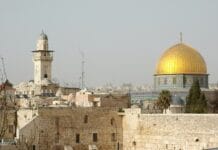Iraq, a land often associated with conflict and turmoil, holds a treasure trove of history, culture, and natural beauty that often remains obscured. In this article, we embark on a journey to uncover lesser-known aspects of Iraq, offering a more detailed view of this diverse and historically rich country, beyond its challenging narratives.
-
- Ur: The Cradle of Civilization (Established ~3800 BCE)The ancient city of Ur, located in what is now southern Iraq, is a true archaeological gem. With a history dating back to around 3800 BCE, it stands as one of the oldest cities in the world. Beyond its age, Ur holds a special place in history for being associated with the Sumerian civilization, considered one of the earliest known civilizations. The Great Ziggurat of Ur, a monumental temple tower, is a striking remnant of this ancient city. The ziggurat, with its distinctive stepped structure, was dedicated to the moon god Nanna and served as a central religious and administrative hub. It stands as a testament to the architectural and engineering prowess of the time and reflects the advanced understanding of mathematics, astronomy, and spirituality.
- Marshes of Mesopotamia: Natural Wonders (Date: Ongoing)Iraq’s southern marshes, a labyrinth of reed-filled waterways, form a unique and ecologically significant wetland ecosystem. This area is part of the historical region known as Mesopotamia, which means “land between two rivers” in Greek. The Marsh Arabs, or Ma’dan, have lived here for centuries, developing a sustainable way of life deeply connected to the marshes. Over the years, these wetlands have played a crucial role in regulating the flow of the Tigris and Euphrates rivers and are home to an astonishing diversity of bird and plant species. This fragile ecosystem faced drastic decline in the late 20th century due to drainage and dam projects, but ongoing restoration efforts are gradually reviving this natural wonder.
- Archaeological Riches: Nimrud and Hatra (Established ~13th Century BCE and ~2nd Century CE)Iraq is a country steeped in history and boasts a rich archaeological heritage. Nimrud, founded around the 13th century BCE, was once a prominent city of the ancient Assyrian Empire. It was adorned with grand palaces and temples, reflecting the might of the empire. Hatra, on the other hand, was a major trading and cultural hub during the Parthian Empire in the 2nd century CE. It stood as an impressive blend of Eastern and Hellenistic architecture, with well-preserved temples, sculptures, and fortifications. Despite challenges over the years, including acts of vandalism, these sites continue to offer valuable insights into the complex history of the region and its interactions with neighboring civilizations.
- Cultural Crossroads: Baghdad’s Golden Age (8th – 13th Centuries)Baghdad, Iraq’s capital, has a rich historical legacy that extends far beyond its modern role. During the Islamic Golden Age, particularly from the 8th to the 13th centuries, Baghdad was a center of learning, culture, and innovation. The House of Wisdom, established during the Abbasid Caliphate, was a pivotal institution that brought together scholars, scientists, and translators from different cultures. Here, works from various traditions were translated into Arabic, helping to preserve and disseminate knowledge from ancient Greece, Persia, and India. The era produced significant advances in mathematics, astronomy, medicine, and philosophy, laying the foundation for many scientific disciplines we know today.
- Diverse Culinary Traditions (Throughout History)Iraqi cuisine reflects the country’s rich history and diverse cultural influences. Iraqi dishes are a testament to the country’s multicultural history, incorporating elements of Arab, Persian, Turkish, and Kurdish culinary traditions. Biryani, for example, showcases the Middle Eastern love for aromatic rice dishes, typically prepared with saffron and a mix of spices. Dolma, on the other hand, is a stuffed vegetable dish that bears the influence of Ottoman cuisine. Masgouf, a traditional Iraqi dish, is a prime example of the country’s intimate connection with the Tigris and Euphrates rivers, featuring grilled fish seasoned with a flavorful marinade. Each dish carries with it a unique narrative of Iraq’s history and the fusion of cultural elements that define its culinary landscape.
- Erbil Citadel: The World’s Oldest Continuously Inhabited Town (Established ~2300 BCE)The Erbil Citadel, located in the Kurdistan region of Iraq, is one of the most fascinating historical sites in the country. As one of the world’s oldest continuously inhabited towns, dating back to approximately 2300 BCE, it stands as a testament to the enduring human presence in the region. This UNESCO World Heritage Site, often referred to as Hawler Citadel, has a rich history of successive civilizations, including the Assyrians, Persians, and Mongols. Its labyrinthine streets, ancient structures, and preserved heritage offer a unique window into the historical layers of Iraq’s culture and civilization.
- Historical Religions: Ancient Christianity and Zoroastrianism (Throughout History)Iraq is a land deeply interwoven with the tapestry of religious history. Notably, it has historical ties to ancient Christianity, with monasteries and churches dating back centuries. This reflects the early spread of Christianity in the region, and the country was home to some of the world’s most ancient Christian communities. Additionally, Iraq has a connection with Zoroastrianism, one of the world’s oldest religions. The historical city of Babylon, located in modern-day Iraq, played a significant role in the development of this faith. Understanding these religious aspects provides valuable insights into the diverse religious landscape of the country.
- Lively Souks: The Bustling Markets of Basra (Throughout History)Basra, a port city in southern Iraq, has a vibrant history as a trade and cultural center. Its markets, or souks, are bustling hubs of commerce and cultural exchange. These markets have for centuries brought together a tapestry of goods, including spices, textiles, jewelry, and, of course, the catch of the day from the nearby waters. The historical legacy of Basra as a trading city dates back to the Abbasid Caliphate, reflecting a history of economic and cultural interaction that continues to shape the city today.
- Marsh Arabs’ Unique Lifestyle (Date: Ongoing)The Ma’dan, or Marsh Arabs, have inhabited the southern marshes of Iraq for centuries. Their distinct way of life, intertwined with the marshes, is an example of a unique human-environment relationship. They construct their reed houses, known as mudhifs, entirely from the natural resources of the marshes. Water buffalo play a crucial role in their lives, serving both as a means of transportation and a source of livelihood. Despite the challenges the marshes have faced due to drainage and infrastructure projects, the Ma’dan communities are known for their resilience and their ability to maintain their traditional lifestyle and cultural practices.
- The Cradle of Agriculture: Domestication of Wheat and Barley (Approximately 9000 BCE)
The fertile crescent of Mesopotamia, encompassing parts of modern-day Iraq, has often been called the “cradle of civilization” for a good reason. It was in this region that some of the world’s earliest agricultural practices took root. Approximately 9,000 years ago, the domestication of wheat and barley began, marking a pivotal moment in human history. This transition from hunting and gathering to agriculture laid the foundation for settled societies and urbanization. The region’s fertile soil, along with the Tigris and Euphrates rivers, provided the ideal conditions for early agricultural experimentation. The cultivation of these cereal grains allowed people to establish permanent settlements, ultimately giving rise to the world’s first cities.
Iraq’s history and culture are richly textured, extending far beyond the headlines of conflict and turmoil. Unveiling these lesser-known aspects of Iraq reveals a country steeped in ancient history, natural wonders, cultural diversity, and innovation. These rarely known facts and figures shed light on the hidden treasures and the enduring resilience of a nation with a narrative that spans millennia. Iraq’s extraordinary history, diverse culture, and stunning landscapes offer a deeper appreciation for the multifaceted nature of this remarkable country.



